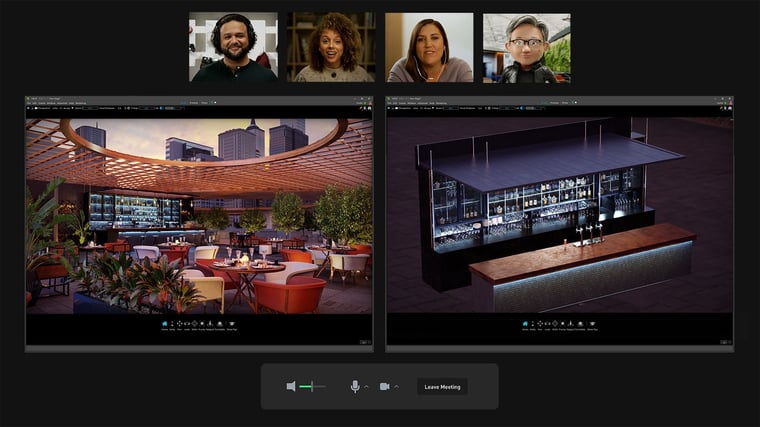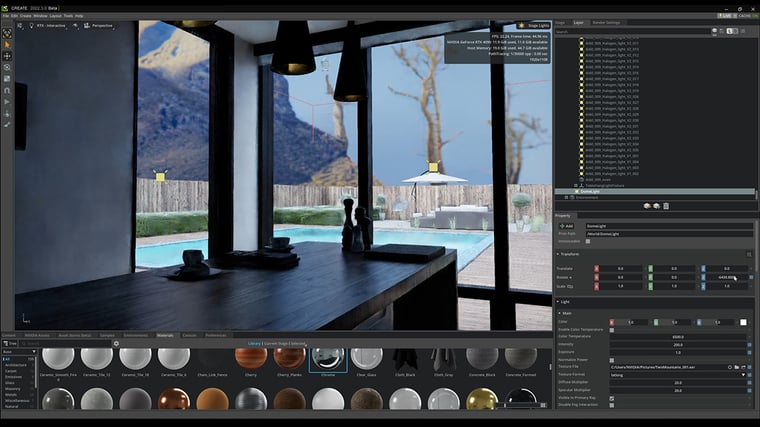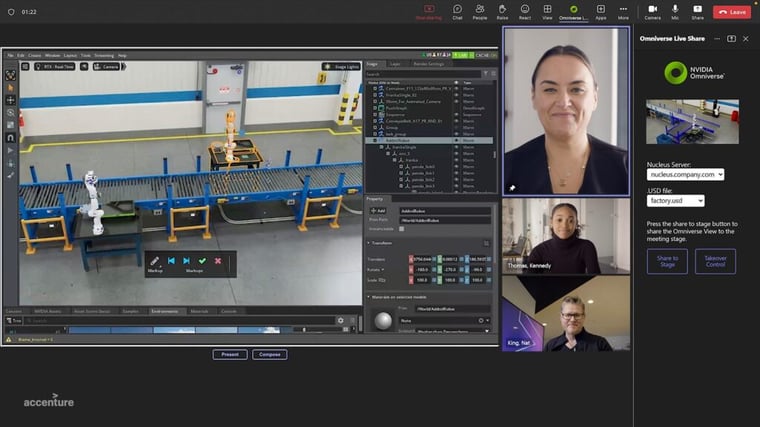
The advantages of using 3D fabric textures in your interior designs on NVIDIA Omniverse
Published by Admin on
Aug 7, 2023 4:35:54 PM
If you're an interior designer or furniture manufacturer, you're always looking for ways to streamline your design process and bring your ideas to life as efficiently as possible. That's where the NVIDIA Omniverse™ platform comes in. By combining the power of real-time 3D rendering with collaborative design tools, Omniverse is quickly becoming the go-to platform for designers and manufacturers everywhere.
3D visualisation has become essential to many industries and digital replicas of physical products, like our digital fabric textures, are required to build immersive visuals that are identical to the physical world. But, 3D design also requires more digital assets and additional design tools that aren’t feasible to implement, one-by-one, on the designer’s existing digital infrastructure.
What Omniverse does is combine design tools and assets from first- and third-party applications into a single hardware and software ecosystem. Omniverse is available to all creators and has more than 100,000 users worldwide.

The power of 3D fabric textures
In 2022, Twinbru announced its partnership with NVIDIA which saw hundreds of digital fabric textures made available on the Omniverse platform. The number of available digital fabrics available on NVIDIA Omniverse will steadily increase over time and it is an exciting prospect to see how creatives around the world will make use of these digital materials. NVIDIA Omniverse is transforming workflows with physically accurate, ray-traced rendering to deliver immersive visualisation and true-to-reality simulation.
There are also great advantages to using digital fabric textures for interior design on the Omniverse platform:
Efficient design process
For interior designers already using digital technology, Omniverse can be a powerful add-on to the tools available. All the data required can be gathered in one place, with a singular viewpoint for design. The simulation features of Omniverse mean designers can spot errors quickly and easily, find solutions for challenges if they can see the creative vision in 3D, and they can even test against realistic details such as changing weather conditions and light. By going through this process in a much shorter time, the design presented to the client is not only delivered faster but with greater accuracy as well, potentially reducing the need for multiple revisions.
Collaborative 3D design
Designers don’t always work solo. Other roleplayers such as lighting experts, kitchen experts, carpenters, builders, and even flooring experts want to have their say as well. With Omniverse, designers and manufacturers can work collaboratively in real-time, making changes and adjustments on the fly. Omniverse allows for the generation of more concepts and collaborators can safely experiment in a 3D simulation before presenting to a client. Additionally, clients can communicate their wishes and changes and see the effect in real-time, creating a space for more efficient and concise communication.
Imagination and experimentation
Interior designers can have great concepts but no space to bring them to life. With Omniverse, these imaginative concepts can be turned into beautiful 3D walkthrough videos or hyper-realistic render images for marketing. There’s no limit to what can be created and the asset libraries, including Twinbru’s 3D fabric textures, allow designers to showcase their ideas and present their design style. For projects on the go, an advantage of having access to digital fabric textures is knowing they are replicas of physical fabrics that can be ordered from a local supplier. So, using these digital textures in a design on Omniverse also gives the assurance that the fabric can be purchased for the project. It’s also a great way to test colours and textures with client input for the ultimate customer-centric experience.
Omniverse on the up
Omniverse has already been embraced by game developers, engineers, and architects, and used in manufacturing and robotics. Businesses in these sectors are using the platform to build custom tools and integrated collaborative pipelines that allow them to deliver beyond what they thought was possible. Interior design can bring your ideas to life faster and with more creative freedom than ever before.
We love to see what other creators can visualise, so we invite you to use our digital fabric twin on the Omniverse platform to create your stunning environments. And don’t forget to share the textures with your network.
Tags:
3D Rendering,
3D Visualisation,
3D Modeling,
Omniverse,
Interior Concepts,
3D Design,
3D Fabric Textures,
Partnerships